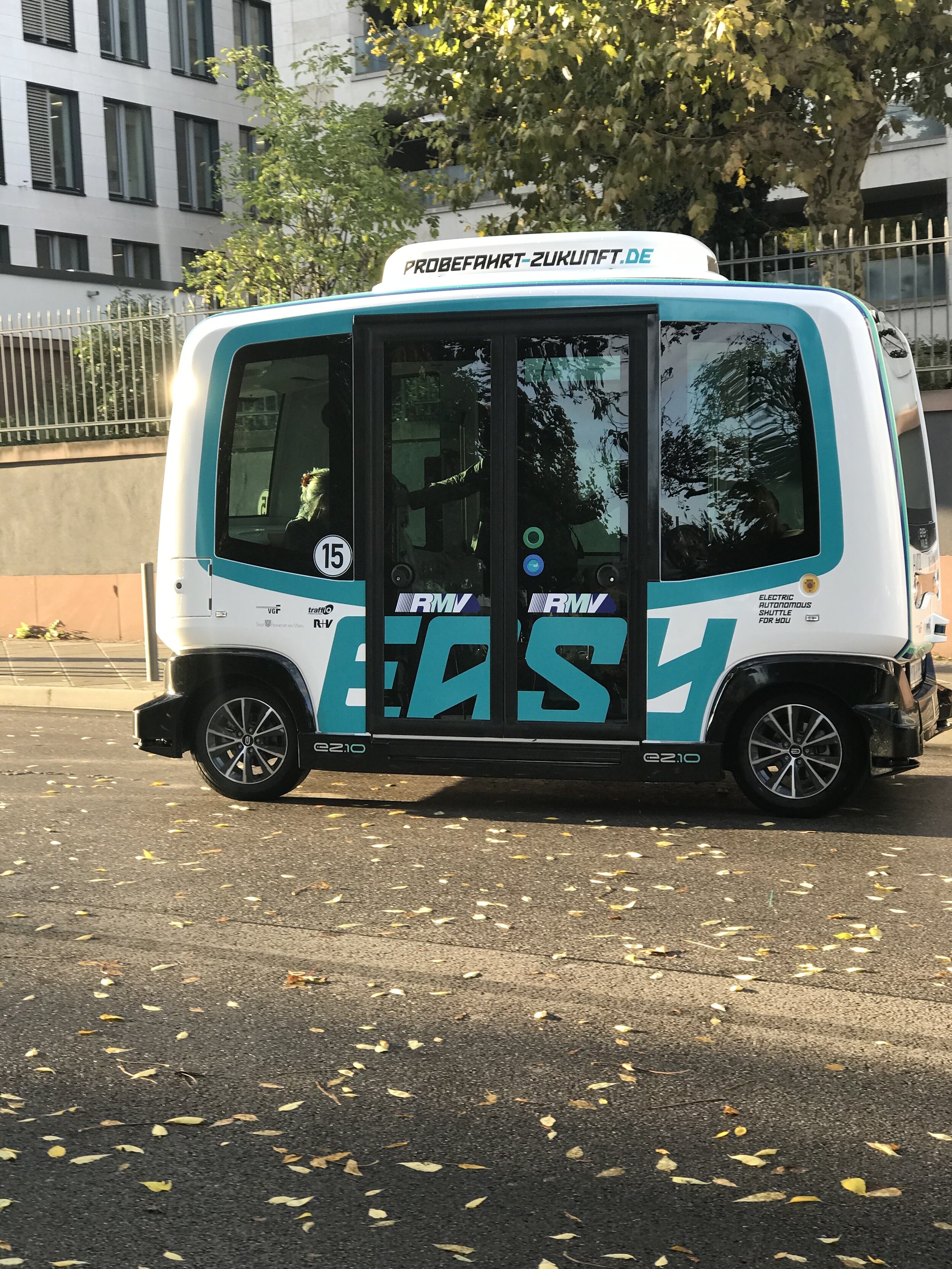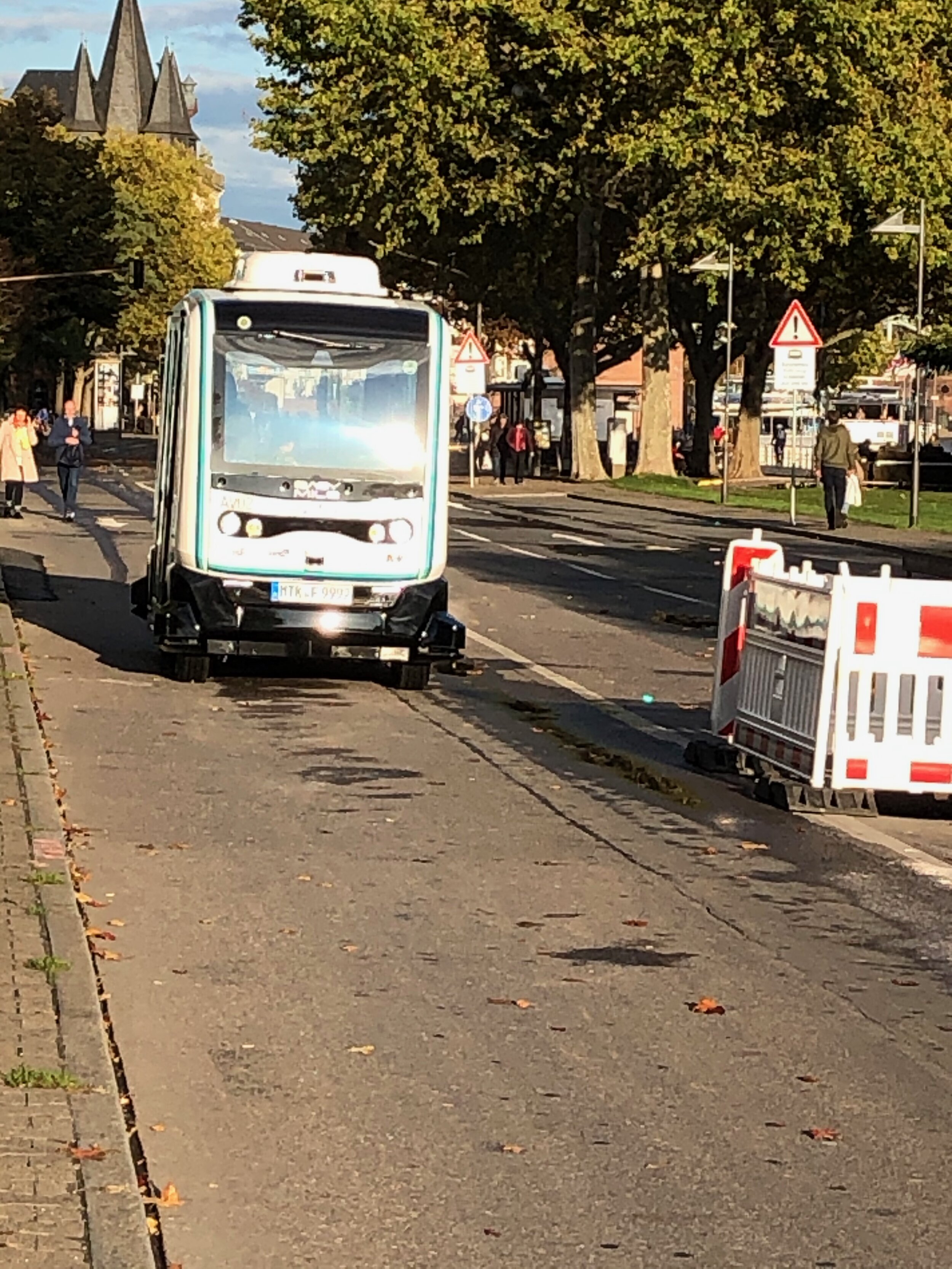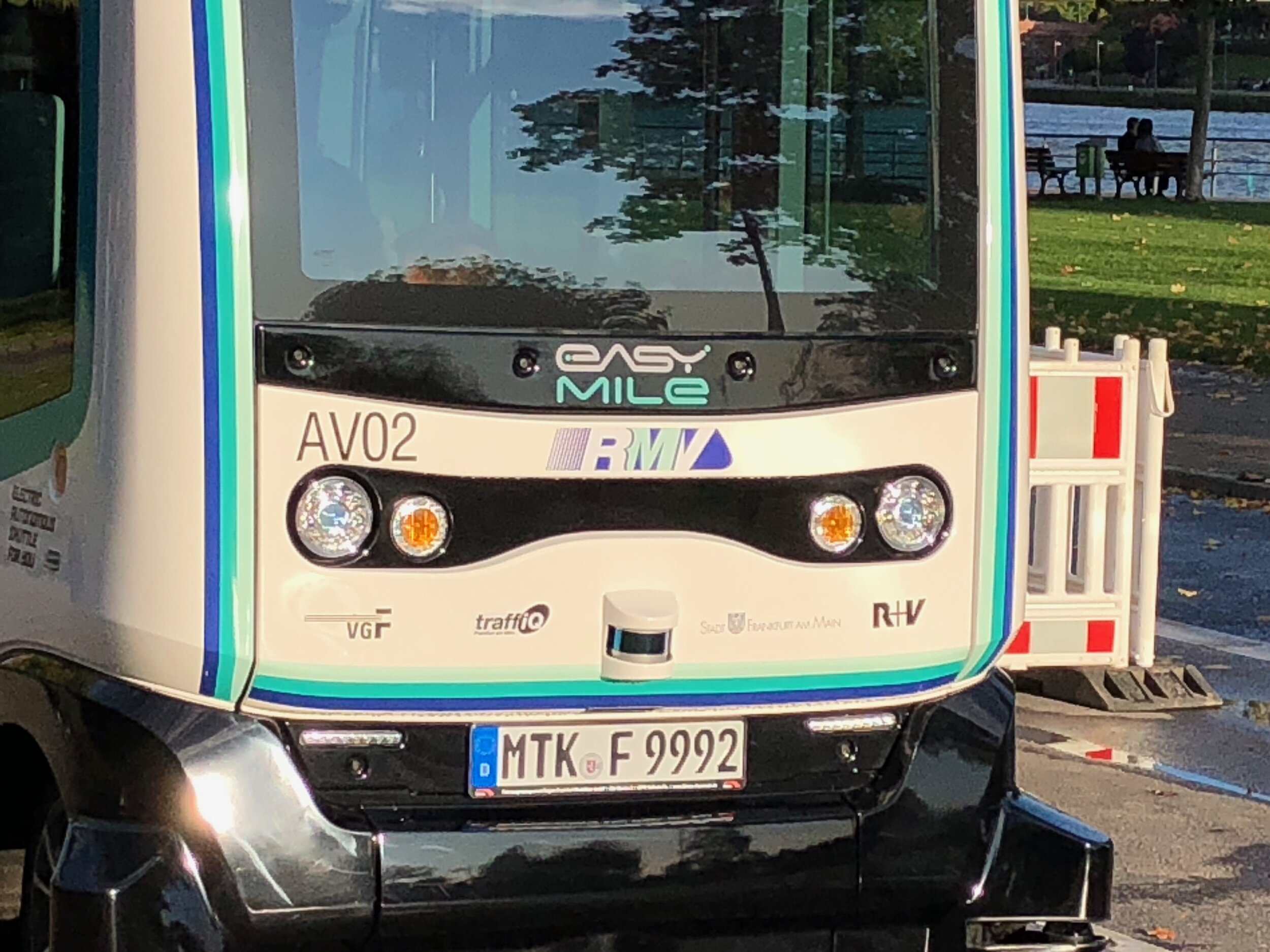My First Autonomous Vehicle Ride: “Easy Rider” meets “My Mother the Car”
I had the opportunity in Frankfurt a few weeks ago in October to see and ride fully-electric autonomous shuttles on a geo-fenced portion of Mainkai along the Rhine River. As an advocate for ADAS and sensing suites including the roles for LIDAR and AI in the future, my wife and I were thrilled to happen upon this trial of an Easymile system.
Easymile is a French firm, with 22M EUROs invested so far from corporate partners, and has put together an interesting set of trial and special purpose (airports) operating sites using various architectures of sensors and vehicles. EasyMile states it has 200 systems deployed, and 150 employees in five offices (Toulouse, Berlin, Denver, Singapore and Melbourne). The company has established large-scale technical and commercial partnerships with prestigious industrial groups such as Alstom, Continental and TLD (a world leader in airport ground transportation). This site went live in September, kicked off by none other than Angela Merkel riding it. The system uses some core technology from Germany’s tier 1 auto supplier Continental AG including LIDAR, ABS, short-range radar and a redundant brake system for safety.
The trials run in Frankfurt do have a safety rider/consultant from the German local partner of Easymile, but the routing is a fixed route with fixed planned stops via GPS programming for picking up and discharging passengers and using only LIDAR at this time for the safety breaking, though other systems it has deployed elsewhere have a mix of possible sensors and related communications that can include:
· LIDARs (Laser Detection And Ranging)
· Cameras
· Radars
· Differential GPS
· Inertial Measurement Unit (IMU)
· Odometry
· Communication with its environment (V2X) and the supervision center via 4G data connection network.
We had a chance to watch the big Easy in action one day, making its methodical slow turns and stops within its geo-fenced area, which also allowed pedestrians and bikes in the area. Easy had banks of lights flash as a warning to on-comers if they were within a given distance, thus providing what should be a clear message, though if in India horn honking would have been the norm from 200 meters in. An issue we saw was how the LIDAR and software behaved such that even standing on the curb in the boarding area forced Easy to stop short if we were not at least 3 feet back off the curb. I thought of myself in NYC or near most any city intersection, or possibly scouting a jaywalking spot, stepping off the curb to see traffic coming on, maybe to make an early crossing ahead of a light change or in hailing a taxi, and envision ADAS cars stopping dead in their tracks and getting rear ended by a live driver.
The next day we had enough time to get in line at a pick-up spot to hitch a ride—much like waiting for a bus or train. These particular vehicles in Frankfurt are designed for 6 seated passengers so we took our seats, our backs facing in the forward direction and within 20 seconds watched as the 3 passengers on the back seats went flying into the floor as Easy Rider slammed to a hard stop. A biker had run straight at it head on, taking evasive action at the last seconds, having a good laugh of having gamed the system. And he was just “playing”, not a Grubhub delivery biker in NYC willing to challenge the sides, fronts and backs of buses, cars and pedestrians for a bonus dollar and adrenaline rush.
In Frankfurt, in nice weather, we had seen both bikers and walkers play similar games the day before, but without such abrupt results. Our employee rider was more shook up than the people on the floor, but the experience points out some issues to deal with: (1) geo-fencing may need real fencing, (2) more real world use cases and sensor and software development is needed, (3) People will do stupid things, in a rush, or lack attention to good street traffic protocols, or in not infrequent cases just for kicks will mess with automation and other people...their Mother needs to yell at them when they even think to do something like that. That may be the ultimate Unicorn opportunity in AI applications and distributed sensing communications.


